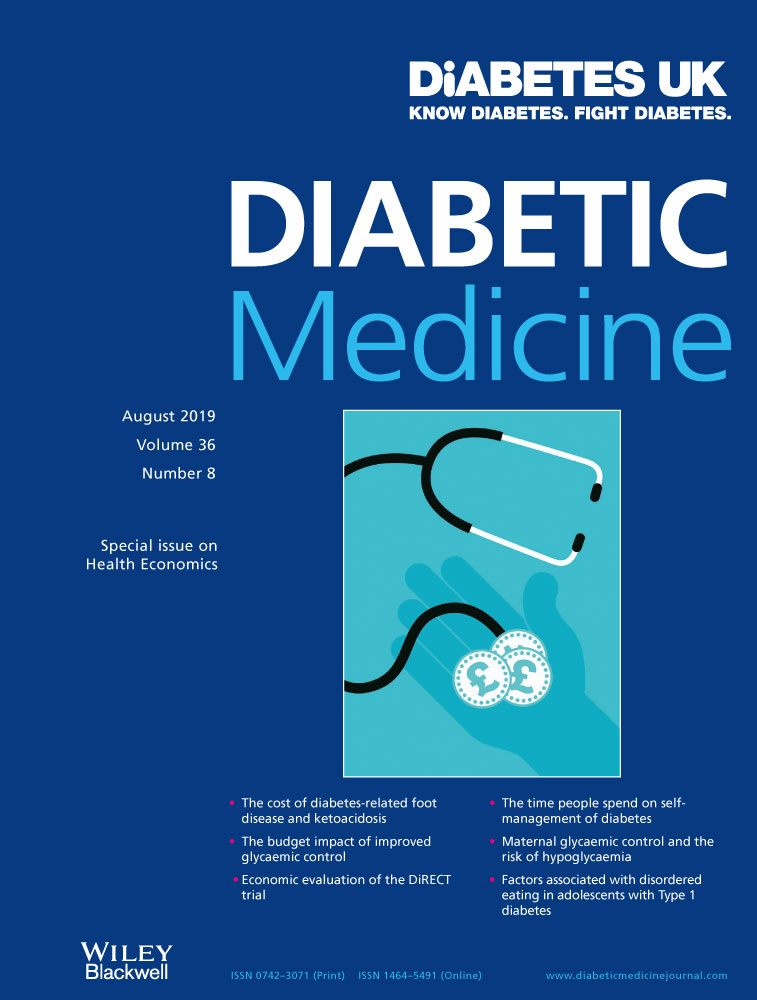Maternal glycaemic control and risk of neonatal hypoglycaemia in Type 1 diabetes pregnancy: a secondary analysis of the CONCEPTT trial
Abstract
Aims
To examine the relationship between maternal glycaemic control and risk of neonatal hypoglycaemia using conventional and continuous glucose monitoring metrics in the Continuous Glucose Monitoring in Type 1 Diabetes Pregnancy Trial (CONCEPTT) participants.
Methods
A secondary analysis of CONCEPTT involving 225 pregnant women and their liveborn infants. Antenatal glycaemia was assessed at 12, 24 and 34 weeks gestation. Intrapartum glycaemia was assessed by continuous glucose monitoring measures 24 hours prior to delivery. The primary outcome was neonatal hypoglycaemia defined as glucose concentration < 2.6 mmol/l and requiring intravenous dextrose.
Results
Neonatal hypoglycaemia occurred in 57/225 (25.3%) infants, 21 (15%) term and 36 (40%) preterm neonates. During the second and third trimesters, mothers of infants with neonatal hypoglycaemia had higher HbA1c [48 ± 7 (6.6 ± 0.6) vs. 45 ± 7 (6.2 ± 0.6); P = 0.0009 and 50 ± 7 (6.7 ± 0.6) vs. 46 ± 7 (6.3 ± 0.6); P = 0.0001] and lower continuous glucose monitoring time-in-range (46% vs. 53%; P = 0.004 and 60% vs. 66%; P = 0.03). Neonates with hypoglycaemia had higher cord blood C-peptide concentrations [1416 (834, 2757) vs. 662 (417, 1086) pmol/l; P < 0.00001], birthweight > 97.7th centile (63% vs. 34%; P < 0.0001) and skinfold thickness (P ≤ 0.02). Intrapartum continuous glucose monitoring was available for 33 participants, with no differences between mothers of neonates with and without hypoglycaemia.
Conclusions
Modest increments in continuous glucose monitoring time-in-target (5–7% increase) during the second and third trimesters are associated with reduced risk for neonatal hypoglycaemia. While more intrapartum continuous glucose monitoring data are needed, the higher birthweight and skinfold measures associated with neonatal hypoglycaemia suggest that risk is related to fetal hyperinsulinemia preceding the immediate intrapartum period.




